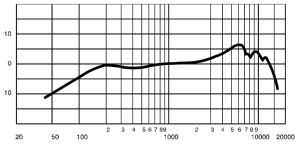This trimester feels like it has had less of a beginning and end than previous trimesters. More projects are continuing on than before and I’m learning to manage multiple projects at once. Organization seems to be the key here to moving forward, and although not the best example, the differences I have noticed in production companies (e.g. AV etc) between successful larger companies and those just struggling to get by are that successful ones are managed, and organized significantly better (e.g. time spent per-production).
So uh, without further re-due here is a short wrap up of all my projects. Unfortunately I won’t be able to provide examples or copies of most of them, as many projects are ongoing and I’m in the process of obtaining their permission.
these projects are complete
Noizemaschin
A local experimental music night run by Perth hackerspace The Artifactory. Skot Mcdonald who runs the night contacted us through SAE and asked if we could provide mastering services for the live recordings of each show.
I would have liked to spend a lot more time on this to better understand the limitations of audio restoration software. Learned about about LUFS, limiting, and noise floor!
Here is a small example of one of the tracks.
these projects are ongoing
Throwing The Habit
Provided an extensive array of foley (made larger thanks to FMOD), VA, and some loopable ambient tracks.
Here are some examples of foley created.
Audiobook (including 5.1 mix)
I have been helping to record a set of short stories for audiobook format with a family friend, conservationist, and story teller Rod Safstrom.
The 5.1 mix of one of the short stories is complete, along with about 7 of the others. Unfortunately its a kinda personal project for him, and so I can’t provide examples. If your name is Brandon there might be a version of all of these in the project folder on the student gdrive.
Transnational Crash
Re-recording the first song I ever recorded by the first band I ever recorded. Most of this is tracked and the final session is actually the Saturday after we finish. Although I’ve spent significant time on the session (mostly drums a.la beat detective/manual alignment), I’m not actually mixing the track). Tried to turn a negative into a positive with this, so they’ve agreed to give me a copy of the final mix which I intend to compare against my own iterations of the mix and see what I can improve with/do differently.
Shit Narnia EP
Yep, this is the same project from last trimester it’s still on-going and I’ve revised many mixes since then. The single is even already mastered (by us), and up on bandcamp here!
Cant Win.Do Try (Feature Film)
Still trying. Not yet winning. Will get there eventually.
Major Project
I have also been working on the pre-production phase of my major project which is going to be as follows.
4 Track E.P. written, produced, recorded, mixed, mastered.
10 minute soundtrack made from sampled elements of the original recording, as well as possible overdubs.
Talent House/Front Website, which would be the gateway to both samples of our work (portfolio) and a “management front” or aggregator for both our music and work in the audio industry.
See you next Trimester!












